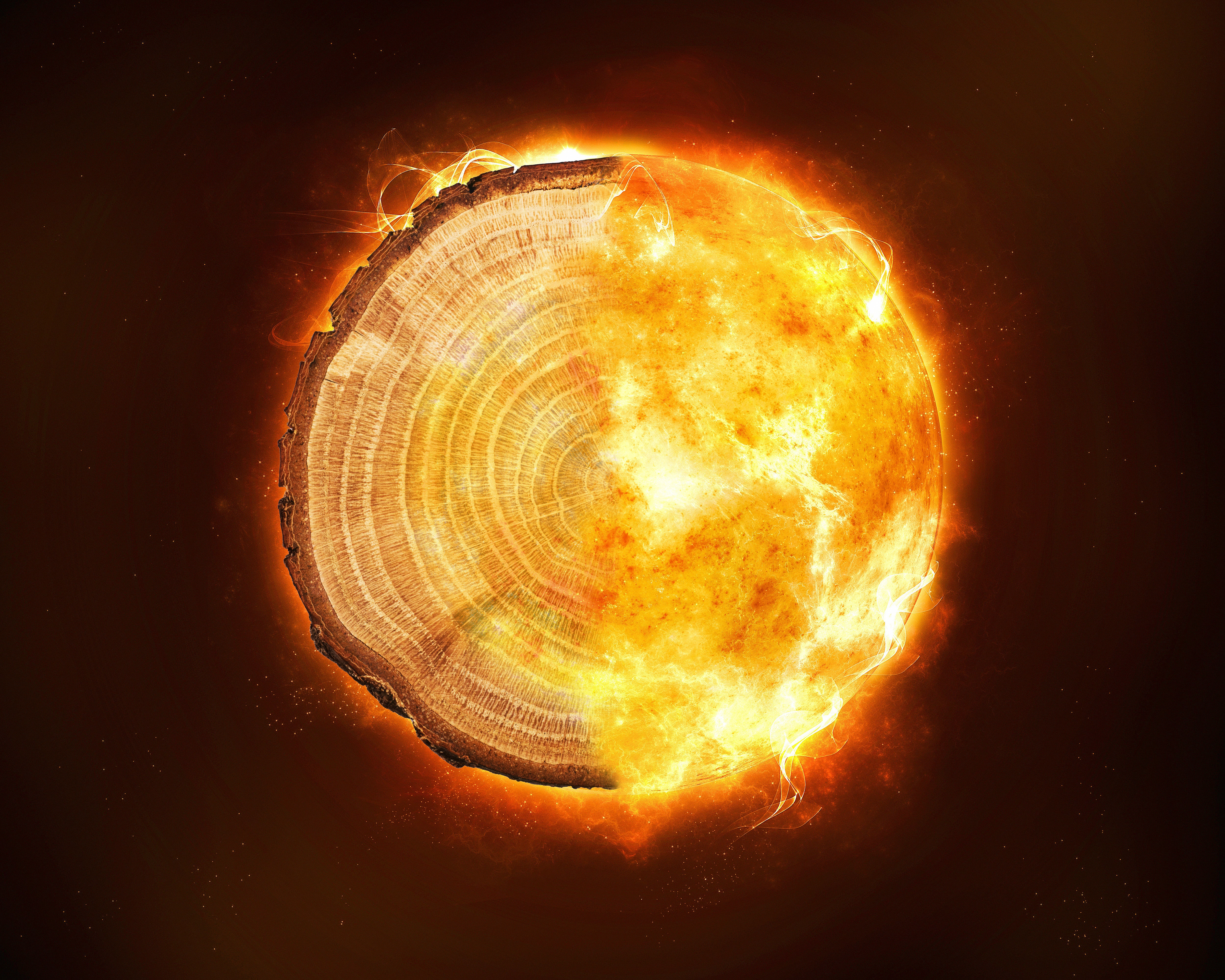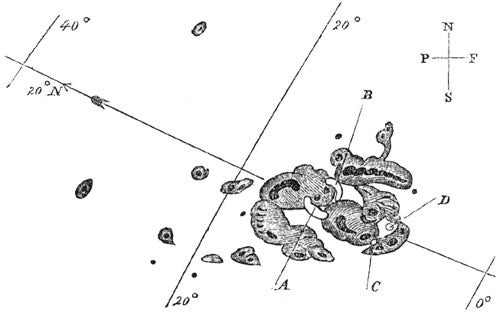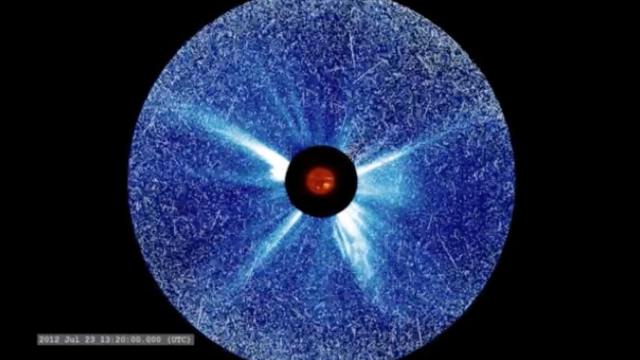A new analysis of six spikes in Earth’s historic radiation levels indicates the events may not be due to typical solar flares, as previously thought.
A team of researchers from the University of Queensland looked at a trove of data — comprising thousands of years and recorded in radiocarbon levels in tree rings — that suggested that the events could be chalked up to some unknown type of cosmic storm. The team’s research is published in Proceedings of the Royal Society A.
Whatever their origins, the energetic spikes in Earth’s radiation levels are due to extreme activity in space. They are called Miyake events after the lead author of the first study about such an event, detected in 1,200-year-old tree rings. The spikes in radiation turn up in isotopes of carbon, beryllium, and chlorine that end up locked away in ice sheets and the dendrochronological record.
“The best theory is that these are extreme solar flares,” said study co-author Benjamin Pope, a physicist at UQ. The team analysed all existing public data on the storms using new open-source software they developed, Pope added.
The events probably are solar flares, Pope said, but “the events don’t seem to occur at a particular phase of the 11-year solar cycle, and even some of them seem to tentatively take longer than they should if they were solar flares.”
Solar flares are outbursts in our Sun’s corona; they’re also called coronal mass ejections (CMEs). Large flares can wreak havoc on human electronics on Earth and in space. The biggest ones — candidate Miyake events — are also called solar particle events or solar proton events (SPEs).

Miyake events are observed in tree rings around the world. As trees age, they develop concentric rings in their trunks. These rings can be used to determine their age, their rate of growth, and (as evidenced in the new research) the amount of carbon-14 in the Earth’s atmosphere, which is absorbed by our planet’s biosphere.
Due to their reliable creation with each passing year, tree ring data makes it possible to identify shipwrecks and date events like droughts, floods, volcanic eruptions, and cosmic Miyake events with remarkable precision.
So far, six Miyake events have been reliably identified in tree ring data: They happened in 7176 BCE, 5410 BCE, 5259 BCE, 660 BCE, 774 CE (the first-identified event), and 993 CE. Other events of slightly smaller magnitude have been identified, as well as some events that have been claimed but not globally replicated.
The recent team found that Miyake events are not correlated with sunspots — darker, very magnetic regions on the Sun’s corona.
“Rather than a single instantaneous explosion or flare, what we may be looking at is a kind of astrophysical ‘storm’ or outburst,” said Qingyuan Zhang, a physicist at the University of Queensland and the study’s lead author, in a university release.
The events could be a number of solar flares spread out over time, Pope said. That would be a hassle to deal with on Earth but wouldn’t have the same damaging effects as one massive solar storm.
Though no Miyake event has (yet) happened in modern times, intense solar flares offer a glimpse at how they would manifest. In 1859, an English astronomer named Richard Carrington saw two bean-shaped blobs of bright light move across the Sun.

Across the northern hemisphere, the sky became as bright as if the Sun were nearly up, though it was still the wee hours of the morning in North America. Shortly thereafter, a powerful geomagnetic storm lashed the Earth, causing telegraphs to spark and creating electrical fires.
Now 163 years since the Carrington Event, scientists think we could be due for another ‘Carrington Event’ at any time. Given the ubiquity of electronics around the globe, such an event would have much more damaging effects today than in 1859.
In 1967 and 1972, powerful geomagnetic storms took ballistic missile systems offline and even triggered the detonation of magnetic sea mines — a warning of the trouble a modern Miyake event could cause.
In 2012, a NASA-described “Carrington-class” CME narrowly missed Earth; a National Academy of Sciences report found that an event like it could cause as much as $US2 trillion in damages.
“If the 774 AD Miyake event really was a super-Carrington solar flare, it was probably around 80x bigger [than the Carrington Event],” Pope said. “We’re talking about a seriously souped-up version of that disaster — taking out electricity and internet across much of the Earth.”
More tree ring data would help improve the team’s model, Pope said. Being able to analyse the rings from Tasmanian huon and kauri wood from New Zealand, locked away in bogs, as well as Japanese cedar, California bristlecone and Siberian larch would help tell the story of Earth’s geomagnetic past. Taken in concert with ice cores that tell the same story but in different isotopes (of chlorine and beryllium, rather than carbon), the data would improve scientists’ timing of the events as well as the particles involved in them.
The more we know about cosmic storms, the better we might be able to anticipate them. But if your computer is sparking as you read this, perhaps we should’ve kept the article brief.
